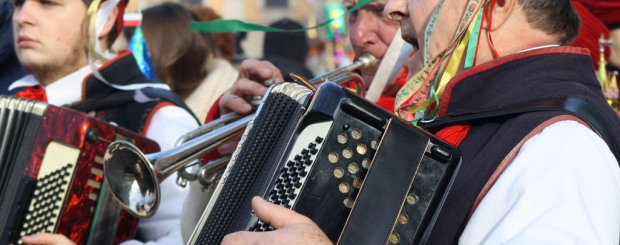Christmas in Krakow: A holiday celebration like no other
According to CNN Travel, Kraków with holiday markets, mulled wine and the unique “szopki” culture, may be the most traditional December destination in the world.
Welcome to a city so cold that even a well-insulated, heavily whiskered Santa Claus might think about pushing back gift delivery till spring.
Beneath the cold of the southern Polish city of Krakow, however, lies an ancient hotbed of holiday trade that generates enough Christmas warmth to overcome any winter chill.
This is Christmas, Krakow-style.
Christmas market
The buzz of a Krakow Christmas is best captured by the majestic Rynek Glowny — the city’s main market square — which has overseen billions of bartered transactions since its rise to prominence in the thirteenth century.
Amid the archaic surroundings of Baroque palaces and Gothic churches, shoppers feast their eyes — and taste buds — on an array of gifts and culinary treats.
Against snow-white backdrops and average December temperatures of minus -3 C (26 F), the market’s food stalls — also an unofficial heating system around the main Renaissance Cloth Hall — are crowd magnets.
Scents range from the juice of sizzling fat sausages and roasted pork to the fried variant ofoscypek cheese, a concoction of salty sheep’s milk dreamed up in the Tatra mountains.
Dried mushrooms and exotic spices are also prevalent, along with the inevitable chorus of “Sto lat!” (May Poland live for 100 years!) When glasses of local beers are clinked, their sound blends with the sleigh bells of passing horse-drawn carriages.
The folk arts and crafts of the surrounding Malopolska region are remarkable — this year they’re to be found in the southwest corner of the market.
Ornaments, toys, Christmas candies, local pottery, knitwear and cut glass all have a distinctly Polish feel.
If you’re around until January 6, the de facto closing ceremony of the market, marked by a procession and carol-festival known as Three Kings Day Parade, is an unforgettable experience.
Szopki rules
Introduced to Poland by Franciscan monks of the thirteenth century, the amazing craft objects known as szopki — popularly translated as “cribs,” but bearing a heavy resemblance to gingerbread houses — represent Krakow’s oldest and most distinct custom.
Traditionally the domain of local craftsmen, but now open to anyone with the will to construct one, the annual szopki competition sees card and colored-foil applied to reconstructing the nativity scene against the backdrop of Krakow’s architecture.
Once used by the intelligentsia as a means to perform nativity plays tinged with social criticism, the szopki are nowadays more appreciated for their intricate appearance than for the puppet plays held within.
They can be seen at various churches around the city and, most notably, at the Historical Museum of the City of Krakow.
Some szopki reach a spectacular two meters high and three meters wide, an effort that leaves your average nativity sculptor with a truly Christian sense of shame.
Their nighttime illumination is particularly impressive.
Trumpeting the past
Krakow’s most wondrous musical sight requires a lot of neck-craning, as it’s located some 65 meters above the market.
Atop the resplendent, Gothic Saint Mary’s Basilica, the Hejnal Mariacki, one of the world’s most bizarre trumpet solos, can be heard.
After the bell sounds every hour, a brass instrument suddenly appears from a window of the tallest basilica tower and plays a five-note melody, broken off mid-sequence by the ultimate bum note.
Far from having memorized only half a piece in a flurry of ineptitude, the horn player is merely attempting to recreate what happened in 1241, when a sentry apparently tried to warn citizens of an impending Mongolian invasion with trumpet solo.
He was shot in the throat before finishing, in a brutal and astonishingly skilled act of musical suppression.
Thankfully, the modern-day player doesn’t replicate the inevitable dropping of the trumpet. Instead, he waves it at the crowds below.
Equally amusing is the sight of Krakow street musicians deliberately slowing down or speeding up their final song of the hour so that its ending may coincide to the nearest second with the first bell chime.
Stop whining, start wining
The Christmas market is peppered with dozens of giant barrels with gaudy labels reading: “GRZANIEC.”
This is Poland’s aromatic mulled wine, and the decision to accept a free-taster should not be mulled over.
Dry red wine, sugar and partially crushed cloves combine to produce an aromatic blend when served hot.
Its value on a chilly winter’s day unquestionable — a steaming glass of grzaniec is a suitable complement for the iconic Krakowian bagels known as obwarzanki. The obwarzanki vendors also offer trinkets and toys throughout the season.
Such snack points are particularly valued on December 24 and 25, when nearly all city restaurants are closed.
Grzaniec is on sale in Rynek Glowny for the entire duration of the Christmas market.
Mass entertainment
With 87 percent of the population Catholic, Midnight Mass in Poland carries a powerful significance.
Krakow is especially proud of its religious heritage, not least because its former archbishop Karol Wojtyla went on to become Pope John Paul II.
To see where he used to hold masses, head to the imposing confines of Wawel Cathedral. Highlights include the fifteenth-century sarcophagus of King Vladislav II Jagiello and the seventeenth-century mausoleum of St. Stanislaw. [A previous version of this story incorrectly called it the mausoleum of King Stanislaw. This error has been fixed. — Ed]
Adjacent Wawel Castle plays host to the scene of Pope John Paul II’s first-ever mass, where he stood among the buried national heroes and kings housed in the Crypt of Saint Leonard’s.
A special midnight mass may be experienced amid inspiring stained glass windows and before the astonishingly beautiful altar of Saint Mary’s.
Painstakingly carved by Wit Stwosz over a 12-year period, the three-story altarpiece — ranked among the world’s largest — has some 200 limewood sculptures depicting various saints in highly lifelike form.
There are a host of other fine churches in the Krakowian conurbation, among which the pure-white Baroque façade and accompanying dome of Saint Peter and Saint Paul Church is highly regarded.
The hidden gem is the Basilica of Saint Francis, treasured for its art nouveau murals and outstanding stained glass.
Midnight mass at Saint Mary’s Basilica starts at 11:40 p.m. on December 24. Most churches begin services around 11:30 p.m.



